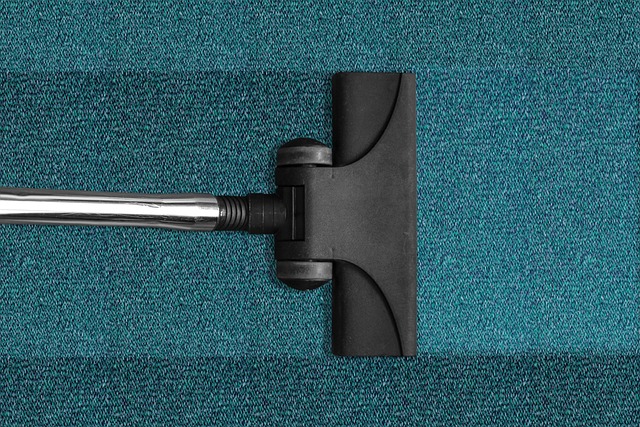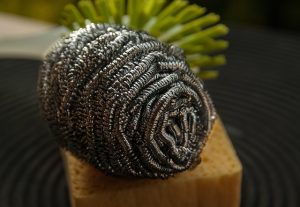This text provides comprehensive guidance on pet stain cleaning, emphasizing immediate action for urine and feces, prompt treatment for blood, and tailored cleaning methods based on stain type. It recommends using enzymatic cleaners, vacuuming, and specific solutions like baking soda and white vinegar for eco-friendly cleaning. Preventive measures include regular grooming, designated areas for pets, and frequent washing of bedding and toys. For stubborn stains, it suggests consulting professional pet stain cleaning services. Key focus: effective yet safe pet stain removal through various methods.
“Discover swift and effective pet stain removal techniques to keep your home spotless! This comprehensive guide tackles common pet messes, offering a range of solutions. From understanding the causes behind various stains to providing essential tools and step-by-step instructions for different types, we’ve got you covered. Explore natural cleaning alternatives, prevent future incidents, and know when professional help is needed. Master pet stain cleaning with our expert tips and maintain a fresh, clean environment.”
Understanding Common Pet Stains and Their Causes

Pet stains can be a common and frustrating issue for many pet owners, but understanding their causes is the first step in effective pet stain removal. Common pet stains include urine, feces, vomit, blood, and paw prints. These stains often arise from accidents, natural behaviors, or even playful antics. For instance, pets may leave urine stains on carpets due to marking territories, especially if they feel stressed or insecure. Fecal stains can result from diarrhea or accidental mess during mealtimes.
Identifying the source of a pet stain is crucial for successful cleaning. Urine and fecal stains often require immediate attention as they can cause permanent damage if left untreated. Blood stains, while not always from injuries, should be treated promptly to avoid discoloration. Paw prints, though usually harmless, may leave behind mud or dirt that needs to be removed. Knowing the nature of the stain helps in choosing the right cleaning methods and products for effective pet stain cleaning.
Essential Tools and Materials for Efficient Stain Removal

When it comes to tackling pet stains, having the right tools and materials is half the battle won. Firstly, invest in a good quality vacuum cleaner with powerful suction. This will help remove loose hair, dander, and any visible debris from carpets or upholstery. Secondly, stock up on stain removal products specifically designed for pet messes. Enzymatic cleaners are highly effective at breaking down odor-causing bacteria and removing tough stains. Look for solutions that contain natural enzymes like amylase and proteases, which safely and effectively clean without harsh chemicals.
Don’t forget the importance of an old towel or cloth, some rubber gloves for protection, and a good quality cleaning solution suitable for your fabric or flooring type. Having these essentials readily available will ensure efficient pet stain cleaning, leaving your home fresh and odor-free in no time.
Step-by-Step Guide to Removing Different Types of Pet Stains

Removing pet stains can be a challenging task, but with a step-by-step guide, it becomes manageable. Here’s how to tackle different types of pet messes. First, assess the type of stain—be it urine, feces, or paw prints—as this dictates your cleaning approach. For urine and fecal stains, act swiftly as these can set into carpets or furniture. Blot the area gently with a clean cloth or paper towel to absorb as much of the liquid as possible, being careful not to spread the stain. Then, use a pet stain cleaner or a mixture of equal parts water and white vinegar to pre-treat the spot. Let it sit for several minutes before scrubbing gently with a soft-bristled brush or sponge. Rinse thoroughly with warm water.
For paw print stains on hard floors, start by sweeping away any loose debris. Next, apply a floor cleaner designed for pets or a mixture of warm water and mild dish soap to the affected area. Scrub gently using a clean mop or sponge, then rinse and dry the floor. If dealing with sticky or dried pet residue, use an enzymatic cleaner specifically formulated to break down pet stains and odors before proceeding with the cleaning process.
Natural Cleaning Solutions for Safe and Effective Pet Stain Elimination

When it comes to pet stain cleaning, opting for natural solutions is an environmentally-friendly and safe approach. Many conventional cleaning products contain harsh chemicals that can be detrimental to both your pets’ health and the planet’s ecosystem. Instead of resorting to these, consider using ingredients found right in your kitchen. Baking soda and white vinegar are powerful allies in the battle against pet stains. Baking soda acts as a natural deodorizer, helping to eliminate odors while its abrasive properties gently scrub away dirt and debris. White vinegar, on the other hand, is an excellent disinfectant and can effectively break down and remove organic stains.
Mixing these two ingredients creates a versatile cleaning solution that can tackle various pet messes, from urine stains to fecal residue. Simply apply the mixture to the affected area, let it sit for a few minutes, then scrub gently with a soft-bristled brush or cloth before rinsing thoroughly with warm water. This natural pet stain cleaning method is both cost-effective and effective, leaving your home fresh and clean without exposing your furry friends or the environment to harmful chemicals.
Tips for Preventing Future Pet Stains

Preventing future pet stains is an essential part of efficient pet stain removal. Regular cleaning and spot treatment are key to maintaining a clean home. Always address accidents promptly, as fresh stains are easier to remove. Use enzymatic cleaners specifically designed for pet stain cleaning, as they break down odor-causing proteins effectively.
Implementing some simple habits can significantly reduce the occurrence of pet stains. Ensure regular grooming sessions for your pets to minimize shedding and dander, which are common causes of household dirt and stains. Additionally, provide designated areas for eating and playing, encouraging them to stay off furniture and floors. Regularly washing bedding, toys, and high-traffic areas with pet-friendly detergents can also help maintain a clean environment, reducing the need for frequent pet stain cleaning.
When to Seek Professional Help for Persistent Stains

If persistent pet stains have become a constant battle, it might be time to consider professional assistance. While homemade remedies and over-the-counter products can offer temporary solutions, they may not tackle deep-seated or set-in stains effectively. Professional pet stain cleaning services employ specialized equipment and chemicals designed to remove even the most ingrained messes.
These experts have the training and experience to identify different types of pet spills and apply appropriate techniques for each case. From urine stains to solid waste, they can handle various challenges, ensuring your home is left sparkling clean. Remember, seeking professional help is especially beneficial when dealing with delicate fabrics or hard-to-reach areas, guaranteeing a thorough and long-lasting clean.
